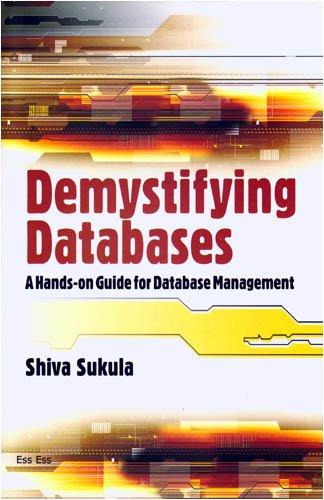Answered step by step
Verified Expert Solution
Question
1 Approved Answer
SOLVE b, c and d PART. a. Let {a,b,c,,z} be an alphabet. Construct regular expressions for the following languages i. The set of strings which

SOLVE b, c and d PART.
a. Let {a,b,c,,z} be an alphabet. Construct regular expressions for the following languages i. The set of strings which are zero or more repetitions of the letter "a". ii. The set of strings in part (i), followed by one or more repetitions of strings "aba" or "bab". iii. The set of strings in part (ii), followed by one repetition of "a" followed by zero or more repetitions of "c". [6 marks] b. Give three NFAs which accept the set of strings described by the three regular expressions in your answer to Question 1a (i), (ii) and (iii). [7 marks] c. Give an example of an NFA that is not a DFA. The NFA should have at least 2 states and be over alphabet with at least three letters. Give a brief explanation why the automaton is not a DFA. [6 marks] d. Give three strings over alphabet {x,y}, which are recognised by the following regular expression: (xy)(xxyy)+yyy(yx) [6 marks]Step by Step Solution
There are 3 Steps involved in it
Step: 1

Get Instant Access to Expert-Tailored Solutions
See step-by-step solutions with expert insights and AI powered tools for academic success
Step: 2

Step: 3

Ace Your Homework with AI
Get the answers you need in no time with our AI-driven, step-by-step assistance
Get Started


